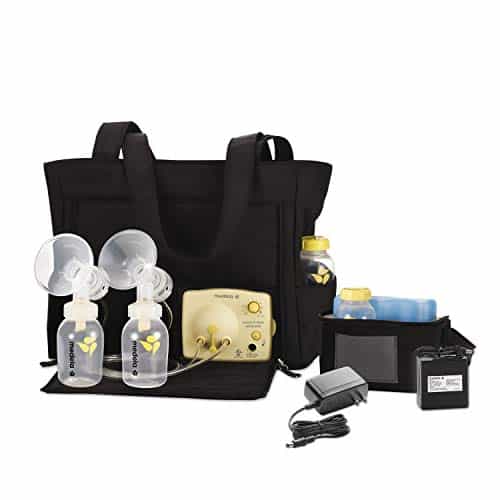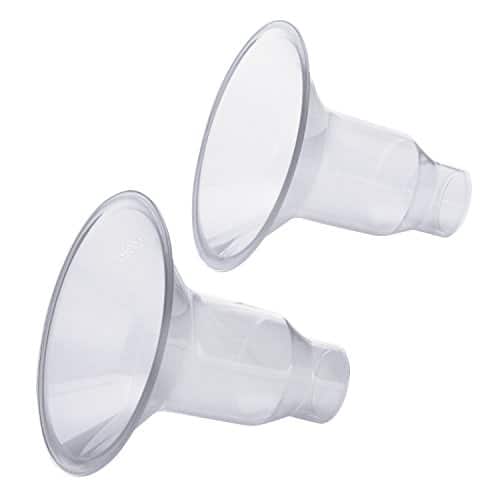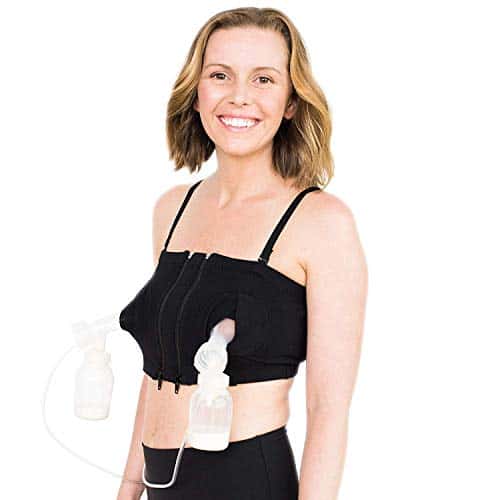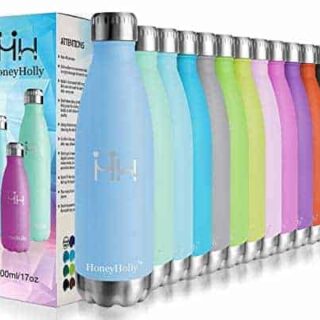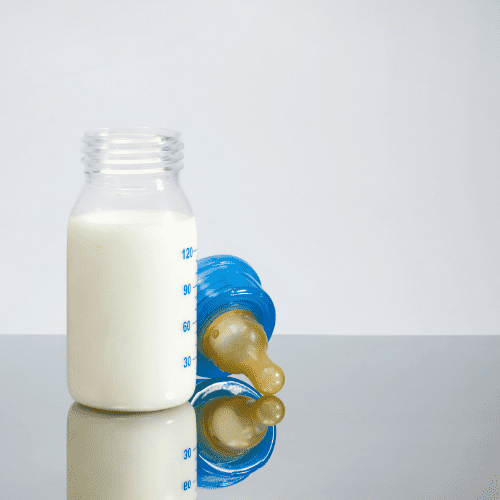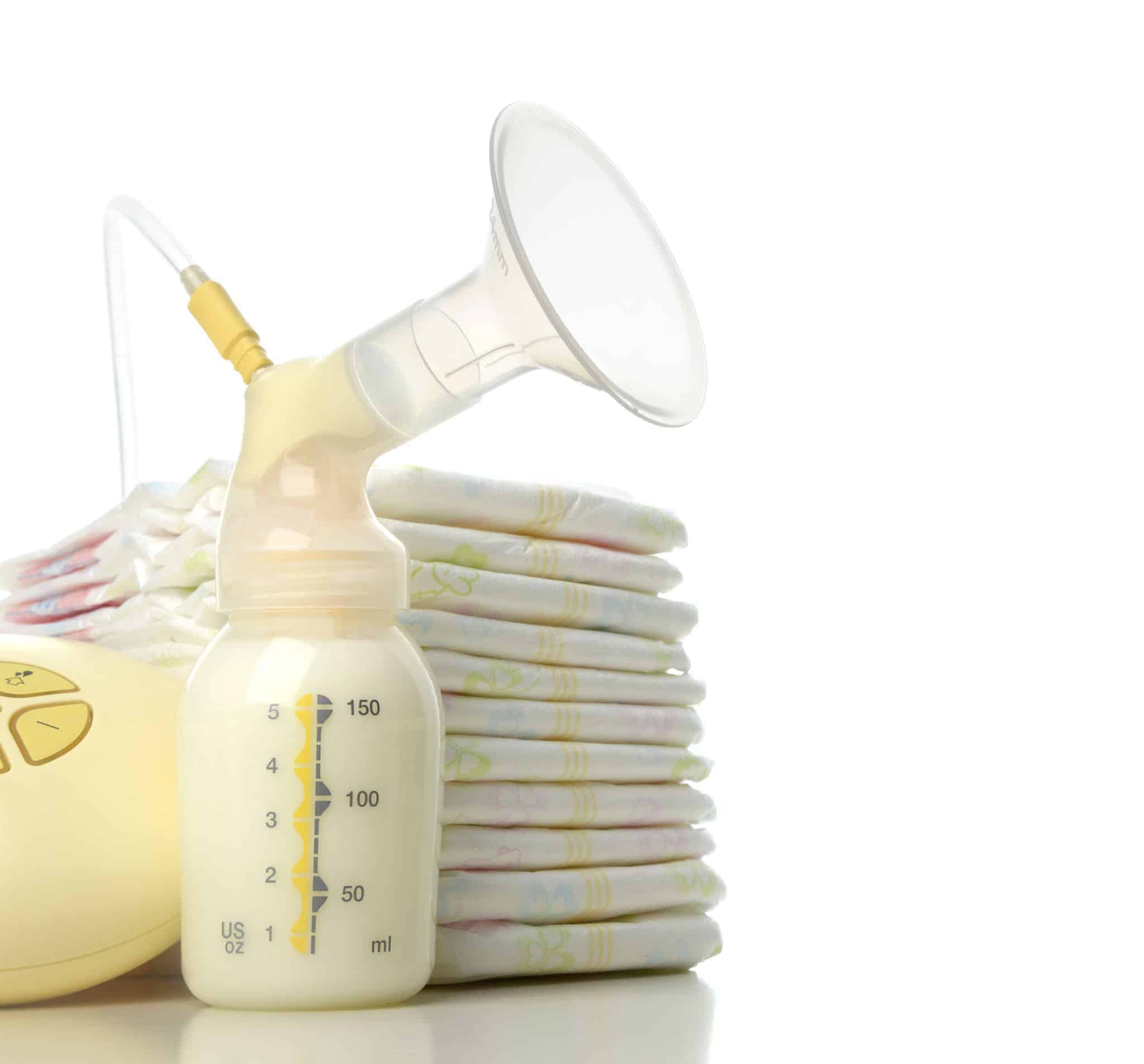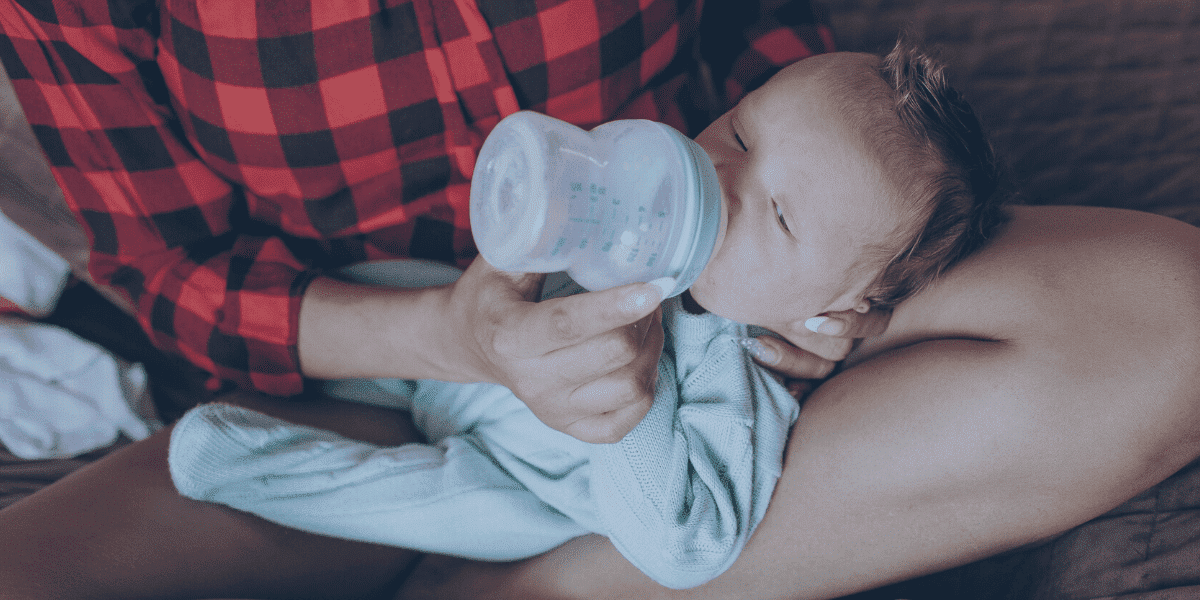
Pumping breast milk seems simple enough; looking back I wish someone had given me some advice when pumping became frustrating, painful and when I didn’t see the amount of milk I had hoped for.
Sometimes it takes a small change to make a big difference.
Whether you have been pumping for a while or just starting out, it’s never too late to learn new techniques.
This article outlines some of the biggest and most common pumping mistakes, such as; not pumping for long enough, not keeping to a schedule, using the wrong pump or flange size, not using a hands-free bra, focusing on building a freezer stash, not prioritizing your mental health, getting dehydrated and not using your hands.
As an Amazon Associate I earn from qualifying purchases. The links below may be affiliate links. Please read my disclosure policy for more information.
1. Not Breast Pumping for Long Enough
You may have the best pump in the world, but if you are not pumping for long enough, then you may not be getting the maximum amount of breast milk you can pump in that session.
A breast pump does not stimulate your breasts as a baby can. A breast pump is the best option to create milk when breastfeeding is not possible or desired.
Some women pump for 5 minutes and get 2-4oz. Other women pump for 20 minutes and get maybe 1 oz. Pumping like breastfeeding is an individual event.
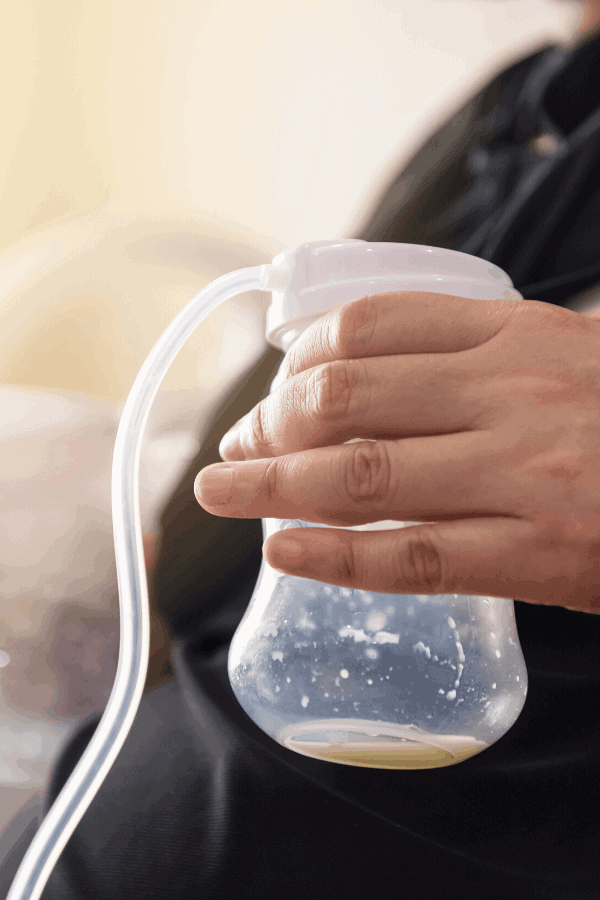
Don’t be impatient when breast pumping; Getting the hang of pumping takes patience.
There is a preparatory time where the electric pump will go fast, stimulating a letdown, which is when your breast milk pumps out quicker.
It then will take up to 5-20 minutes to pump out a volume that is just right for you.
It is generally recommended to pump for about 15-20 min, each time.
If you are double pumping you may see a more efficient output when using an electric pump
When using a double electric breast pump, moms often find more milk output. Other moms find hand pumps to be effective.
And all moms find that hand expressing their milk in addition to pumping to be most effective to have the most output.
Pumping until milk flow slows down for 2-3 minutes. All moms have 2-4 let downs or faster milk flow when babies breastfeed or mom is pumping.
When the milk stops flowing it does not mean another letdown will not happen.
2. Thinking that Missing Pumping Sessions Will Increase Breast Milk
We all have busy schedules and may miss a pumping session here or there.
However, some new moms think by missing a session their breasts will produce double the milk or increase their milk supply.
At first, the breast makes more milk, due to the supply staying in the breast tissue.
This may cause painful breasts that leak. Over time, the feedback to the brain that sees the milk not being drained by the breasts slows down production.
Once in a while, not breastfeeding or pumping is ok.
Breasts regulate themselves well when minor changes happen. Over time, when a mom decreases pump time or a full pump, this will down-regulate her supply, and decrease overall output.
Pumping like breastfeeding is based on supply and demand.

The less you pump the body will think your baby does not need to be fed and that your baby needs less milk
It WILL NOT increase your milk supply by missing pumping sessions.
One of the biggest inhibitors of milk supply is not removing milk frequently enough whether that is via pumping or nursing.
As long as you’re diligent about keeping to your pumping/feeding schedule, the occasional skipped feeding won’t be the end of the world.
3. Not Keeping to a Breast Pumping Schedule
Another common pumping mistake is not to stick to a schedule in order to maintain milk supply.
Around-the-clock schedule for pumping is just as important as breastfeeding your baby directly.
Pumping the first few weeks is not necessary, as you are establishing your milk supply.
Demand feeding or feeding baby as they desire is the best way to learn about your baby, as well as establish a good milk supply.
Once you choose to pump, this will mimic as if you were breastfeeding.
A newborn eats 8-12x in 24. If the baby is formula feeding or not at breast this often, breastmilk supply may go down.
If you pump at work, it is recommended to pump 2-3x in an 8-12 hour work shift. That will most likely sustain your supply while away from baby and breastfeeding.
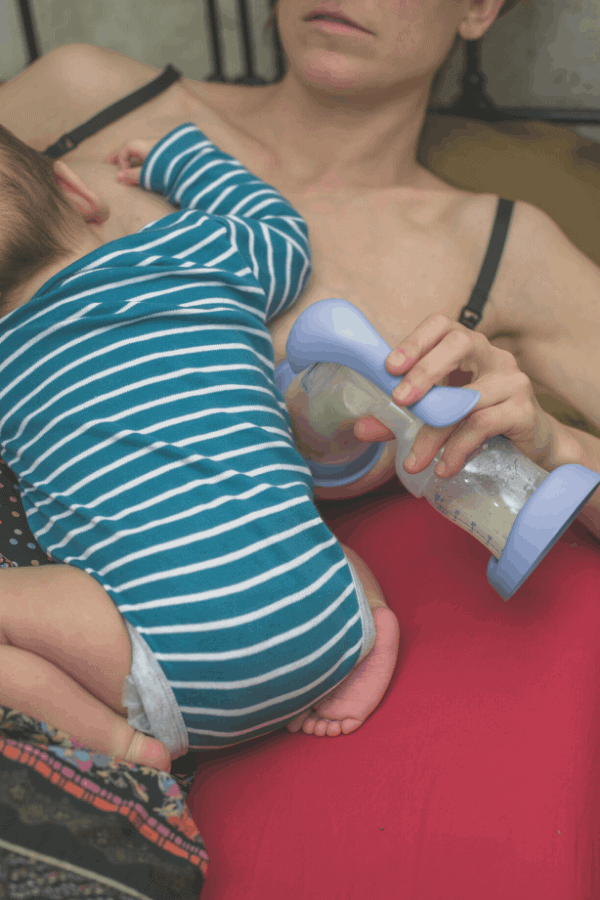
If you want to allow a partner to bottlefeed at night, it may be helpful to pump 1-2x/night, to ensure your supply stays up to your desired amount.
If a schedule is not established your body will think there is a baby that doesn’t need that milk and will produce less breast milk.
Your body produces more prolactin; the hormone that promotes milk
So pumping during the night is essential to keep up milk production.
4. Choosing the Right Breast Pump for You
Having the right pump will make a huge difference in the amount of milk you’ll be able to express.
Some moms may find that a manual pump works better than an electric one. Others find that hand expressing is easier than using any pump at all.
Investing in a double breast pump; could make a huge difference in the amount of time and work it takes to pump a substantial amount and keep your supply up.
5. Using a Suction on Your Breast that Is Too High
When pumping became painful for me I realized that I must have been doing something wrong…turns out I was.
Constantly pumping at a high suction setting was making my breasts and nipples sore.
It was also not necessarily any quicker or gave me a higher volume of breast milk.
It’s a myth that higher breast pump suction level means more milk output, pumping at too high of a suction level can actually hinder milk flow.
When beginning to pump, you sometimes go up to a pressure that feels too high. This will be most accurate when you begin pumping.
Then back it down 2-4 notches, until it feels like a comfortable tug. If the nipple is white or red after pumping for any amount of time, these can be a sign of the pump on too high.
There are measuring rulers that can define your nipple size.
Work out what works for you, you should never pump above your comfort level, and if you’re experiencing pain while pumping you should try turning the suction level down.
Recommendations:
Medela Pump Double Electric Breast Pump
Features:
*Medela is the #1 Physician Recommended Breast Pump Product in the U.S.
*Is designed for daily & frequent use.
*Produces more milk in less time
*FSA or HSA eligible
Medela PersonalFit Breast Shields
Features:
*Comfortable and efficient for pumping with ease
*5 size options, every mom can quickly find the most comfortably fitted breast shields
*Dishwasher Safe
Hands Free Signature Bra
Features:
*Freedom for you to work on tasks or simply relax while pumping.
*Comes with an adjustable Velcro back panel to ensure a perfect fit.
*Works with all major brands.
Insulated Stainless Steel Water Bottle
Features:
*18/8 Stainless Steel
*Durable and dependable
*Keeps cold up to 24 hours, hot up to 12 hours
*Rust proof and leak-proof
*BPA Free Cap
Online Pumping & Breastfeeding Classes
Features:
*Gives you the confidence you to pump like a pro
*Can be done from home
*No need to attend a class
*One of the most reasonably priced course online.
*Read my review here.
6. Using the Wrong Breast Pump Flange Size
One thing that most pumping moms overlook is the flange size.
A bad fitting flange can give you sore nipples and breasts, clogged ducts and can damage your breast tissue.
If the process hurts, then you must have a wrong flange size that could be the culprit.
Using the wrong size flange is more likely to leave you with less pumped milk and a lower milk supply since they won’t efficiently empty your breast.
There are some things to look out for, that might determine whether you have the wrong size
- Your nipple is rubbing the sides of the breast shield tunnel to the point of causing discomfort.
- You see excessive areola being pulled into the breast shield tunnel.
- You have redness on or at the base of the nipple during and/or after pumping.
- Your nipples or areola are turning white during and/or after pumping.
- Your breasts still feel full after pumping.
It is not a case of one
There can be many flange sizes that cater to every woman’s breast size starting from extra small up to double extra-large.
7. Not Maintaining Your Pump Parts
In order to maintain a consistent milk supply, it’s essential to keep your breast pump parts in excellent condition. This involves periodically replacing flanges, valves, membranes, and tubing.
Giving your pump a bit of TLC can work wonders for ensuring a smooth and efficient milk flow. Don’t overlook the upkeep of your pump – by taking care of it, it will take care of you and your milk production.
8. Not Using a Hands-Free Pumping Bra
One thing that changed the game for me was investing in a hands-free pumping bra.
If you are pumping, you need to be using a hands-free pumping bra.
A pumping bra makes for a more comfortable pumping session, you’re not sitting there holding your breast shields in place for 8 x 15 minutes a day!
It makes you more relaxed and, best of all, hands-free if you need to accomplish something while pumping. Pumping bras are great for busy moms.
Pumping bras are a great investment — more so if you plan to pump for an extended time.
I found this pumping bra was a lifesaver when I was absolutely exhausted but still needed to pump.
An inexpensive pump bra hack that you can DIY at home is putting small/dime-sized holes in a sports bra. It will work for a few weeks if a pumping bra is not in the budget.
9. Focusing Too Much on Building a Breastmilk Freezer Stash
This is something that I worried about ALL the time and the worry got to me.
I was stressed and not focusing on what was important, feeding my baby.
Some moms see a dip in their milk supply due to excess stress hormones combating the feel good hormones of creating milk.
No doubt, building a freezer stash of breast milk is great if you are returning to work or would like to have some spare breast milk for a rainy day.
However, as long as you are pumping enough to feed your baby that is what is important.
It’s easy to get a little obsessed with how much milk you have stored up and
If you find you’re worrying about the milk in your freezer becomes a source of stress rather than peace of mind – try to focus more on feeding your baby and today rather than preparing for tomorrow.
10. Not Prioritizing Your Mental Health
If you are really struggling with pumping – the time it takes you away from your baby, the need to figure out how to get your pumping sessions and the mental load – it’s okay to ask for help.
Anything that can help make pumping easier and help you from day one is definitely a benefit.
As a new mother – there is just SO much to know about pumping milk.
The most important thing that you can give your baby is a happy YOU, not an extra ounce of breast milk.
Sometimes you just need some support and help; it is a great idea to prepare for pumping by taking a simple, effective and affordable online breastfeeding class.
I love the Milkology: Pumping Course as it is run by a certified lactation educator and has video-based tutorials. This course helped me to keep going when I was ready to give up.
The course gave me so much knowledge and gave me the motivation that I needed to keep going. It’s such a great course and super affordable.
Read more about the Milkology Course here
11. Getting Dehydrated
Staying hydrated is so important for the overall health of our bodies. Our bodies need water to keep healthy and it is no different for making breast milk and expressing milk.
Often, when I struggled to express enough milk, I knew that I had not been drinking enough water.
I am not great at drinking water, but this water bottle can keep water ice-cold for over 24 hours and during the colder months keeps teas hot for 12 hours.
I would keep my bottle next to me each time I would pump.
If I was pumping at the recommended 8-12 sessions a day then I knew I would be getting all the water I needed to make more milk.
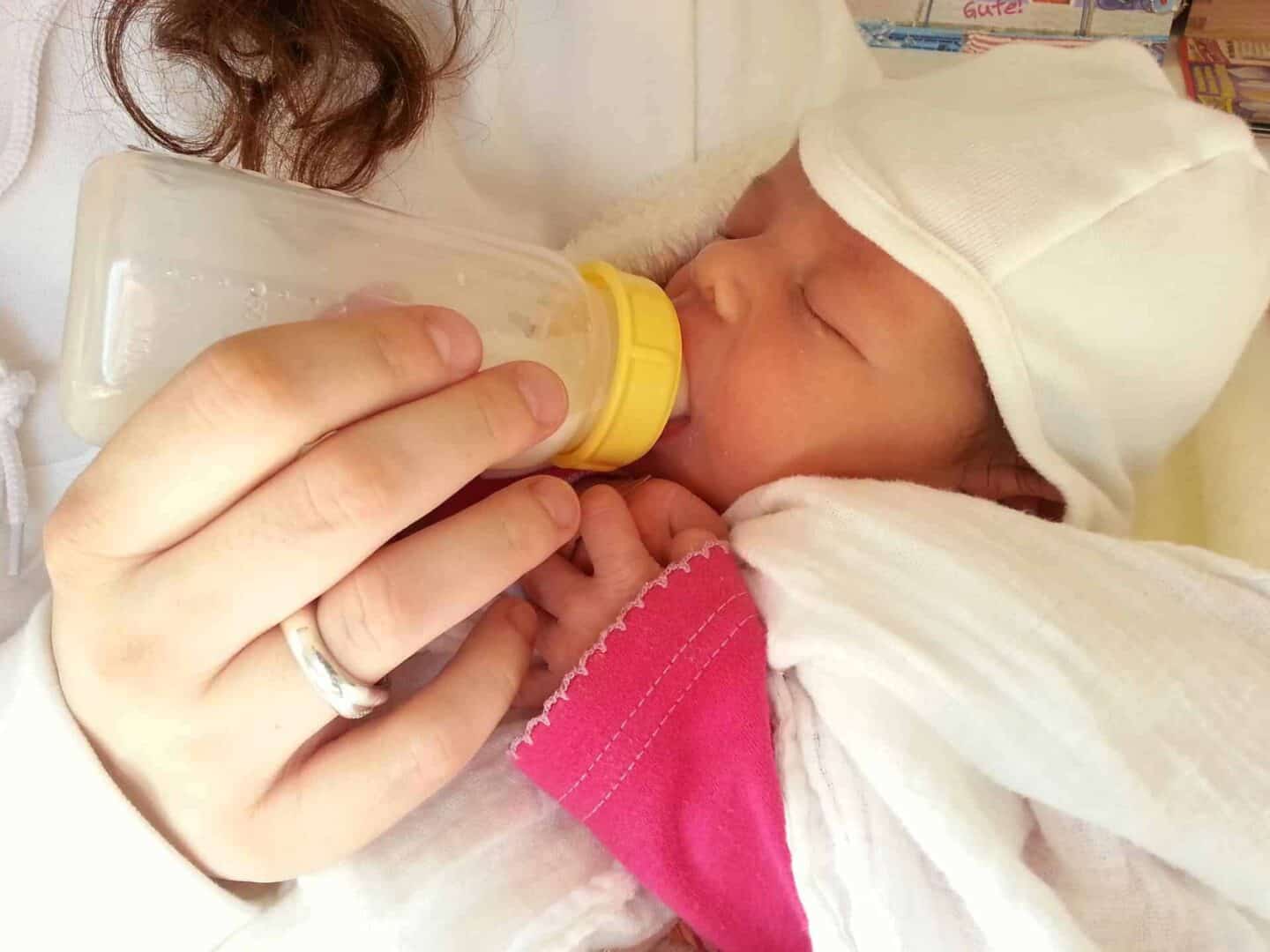
12. Thinking You Don’t Need Your Hands
Think you don’t need your hands while pumping?
By investing in a hands-free pumping bra means your hands are free to help you. You could use this time to hand express to further increase your milk supply.
You can improve the efficiency of your pump sessions and also help prevent clogged ducts.
Spend 2-3 min gently
13. Rushing To Pump Too Quickly After Birth
You and your baby need to work together for the first month to establish your milk supply, and a pump isn’t always necessary if things are going well.
However, if you need to be away from your baby, pumping can be a lifesaver. So, enjoy this bonding time and don’t worry about pumping right away. Your pumping skills will develop naturally in due time.
14. Worrying that One Breast Is Producing less Milk than the Other
Due to the inherent asymmetry in most individuals, it’s not uncommon for breastfeeding mothers to experience a discrepancy in milk supply between their breasts.
It’s typical for one breast to produce less milk, and if both you and your baby are content, there’s usually no need to alter the situation. If you’re experiencing an uneven milk supply and seeking ways to boost production in one breast, there are some strategies you can try.
If you’re a pumping mom, try some of these and let us know what you think.
I hope they make your pumping experience even better!

